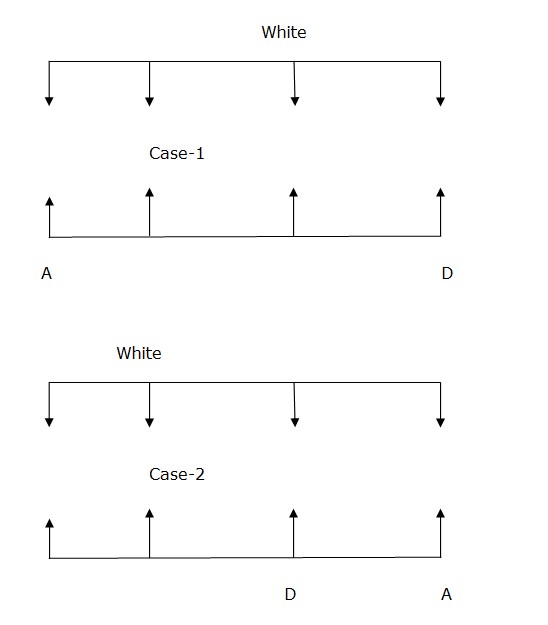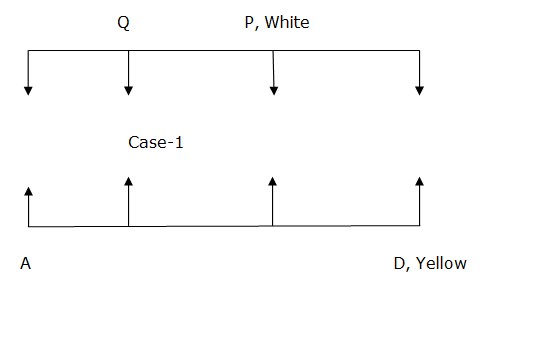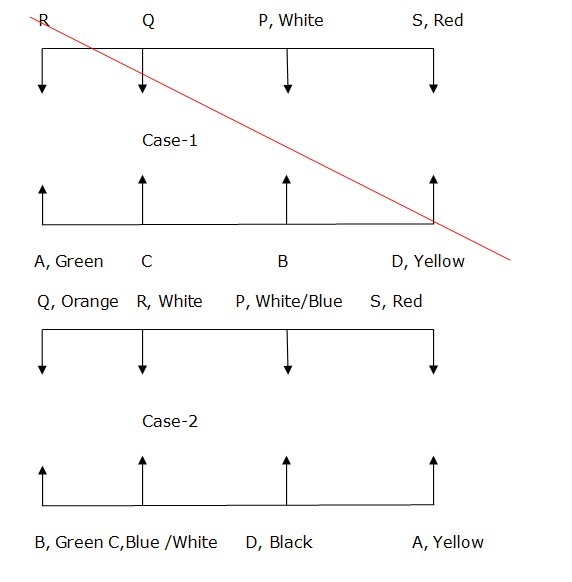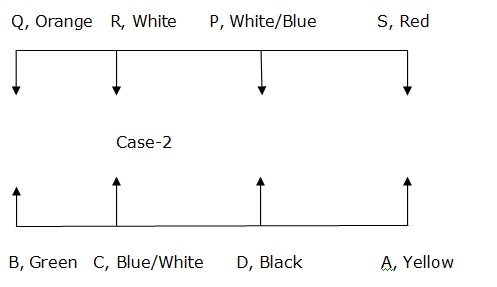Question
Who among the following person likes Red?
Study the following information carefully and answer the questions given below. Eight persons are sitting in two parallel rows facing towards each other. In row 1 – A, B, C, and D are sitting and facing towards north while in row 2 – P, Q, R, and S are sitting and facing towards south, but not necessarily in the same order. They like different colours – Red, Yellow, Green, Blue, Black, Orange, White and White. Only one person sits between A and the one who faces the one who likes white, who doesn’t sit at the ends of the row. D sits immediate right of the one who faces the one who likes white. Only one person sits between Q and the one who faces D. P is the only neighbour of the one who faces the one who likes yellow, who doesn’t face Q. C sits second to the left of the one who faces the one who likes red, which is not liked by R. The one who likes green sits to the left of C, who doesn’t like orange. D neither likes blue nor white. As many persons sit to the right of B as to the left of the one who likes orange.Solution
We have, Only one person sits between A and the one who faces the one who likes white, who doesn’t sit at the ends of the row. D sits immediate right of the one who faces the one who likes white From this condition, there are two possibilities  Again we have, Only one person sits between Q and the one who faces D. P is the only neighbour of the one who faces the one who likes yellow, who doesn’t face Q.
Again we have, Only one person sits between Q and the one who faces D. P is the only neighbour of the one who faces the one who likes yellow, who doesn’t face Q. 
 Again we have, C sits second to the left of the one who faces the one who likes red, which is not liked by R. The one who likes green sits to the left of C, who doesn’t like orange. D neither likes blue nor white. As many persons sit to the right of B as to the left of the one who likes orange from the above condition, case 1 gets eliminated. Hence, case 2 shows the final arrangement.
Again we have, C sits second to the left of the one who faces the one who likes red, which is not liked by R. The one who likes green sits to the left of C, who doesn’t like orange. D neither likes blue nor white. As many persons sit to the right of B as to the left of the one who likes orange from the above condition, case 1 gets eliminated. Hence, case 2 shows the final arrangement.  So final arrangment-
So final arrangment- 
Yesterday, the Principal said that (A)/every students have to submit (B)/ articles for /(C) the school magazine. (D)
In these questions, some of the sentences have errors and some have none. Find out which part of a sentence has an error and indicate corresponding t...
- Parts of the following sentence have been given as options. Select the option that contains an error.
She bought a bunch of flower from the market.... Nazi war criminals accused with (A)/participating in the Holocaust continue (B)/to stand trial and any attempt (C)/of denial is met with punishment (D).
Looking radiant in all frames, Gita’s video (A)/threw up a pleasant surprise when (B)/ she is shown playing a game of cricket.(C)/ No error (D)
Out of the statements given below, one statement may be grammatically and contextually correct. Choose the correct statement as your answer. If all the...
Out of the four given options, choose the most appropriate one.
His advice to them was to not to lose faith upon God .
- From the options given below, select the option which states the correct combination of incorrect sentences.
I. The new policy aims to reduce paper... Read the given sentence to find out whether there are any grammatical/ contextual errors in them. The errors, if any, will be in two of the parts of th...


